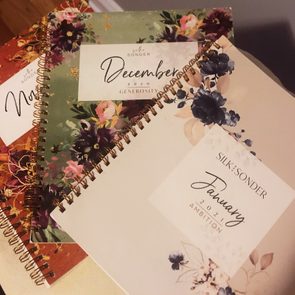How to Set Intentions to Get Un-Stuck and Improve Your Mental Health
Updated: Jul. 26, 2021
Setting intentions, or stating what you intend to do, could help you take action, reach goals in a more mindful way, and benefit your mental health.
Setting intentions for beginners
Some trendy mental health practices have murky or hard-to-define benefits, but others can be pretty useful.
If you enjoy affirmations and manifestation, you should also know about the power and benefits of setting intentions.
Here’s what experts want you to know about how to set intentions, what they are, and how they could benefit your mental and emotional wellbeing.
What do you mean by “intentions”
There are a few ways to interpret what intentions mean.
Sanam Hafeez, a neuropsychologist and faculty member at Columbia University in New York City, says they identify a purpose behind everything you do.
“It can be the kind of life you want to live, how you want to act in a particular situation, or what you want to get out of an experience ultimately,” she says.
Matthew Ferry, a spiritual teacher, happiness coach, and author of Quiet Mind Epic Life, says intentions are creative pursuits that help guide and direct your perspective about life, decisions, and ultimately your actions.
It’s similar but slightly different than a goal, Ferry explains.
While goals focus on a specific end point—suggesting that your current status is unacceptable or unsatisfactory—intentions are more about your mindset and mindfulness in the present as you make your way towards something that’s important to you.
They are about being in tune with an emotional state of being along the journey, rather than a specific outcome.
For example, a goal is often specific, like run a marathon. An intention could be about feeling strong and empowered, letting go of fear, or appreciating your body for what it can do.
“Goals often unconsciously imply attachment to the outcome and dissatisfaction with the current set of circumstances,” Ferry says.
Meanwhile, intentions are created knowing that although all is well, there’s still a creative pull to shift or optimize life. It’s about taking action after inspiration.
For Paul Hokemeyer, a clinical and consulting psychotherapist in New York, and author of Fragile Power: Why Having Everything Is Never Enough, it’s all about being proactive with your life.
“From a neurological perspective, it means that you live your life guided by your highest, most evolved part of your brain, which is your prefrontal cortex,” he says.”People who live lives of intention are influenced by their primitive emotions, but not enslaved by them.”
Intentions vs. affirmations
Note that intentions are different from affirmations (the practice of repeating empowering, supportive mantras designed to bolster happiness and success.)
Hokemeyer says that the main difference is intentions focus on the future, “I will” statements. Meanwhile, an affirmation focuses on the present or “I am” statements.
Ferry adds that affirmations attempt to command the mind or personality to shift into a new pattern. Whereas an intention is a request for the mind or personality to shift.
“Commands create opposition and resistance,” Ferry says. “When you make a request, and give your mind the choice, you reduce resistance and open up your creativity.”
Intentions invite the mind and body into a new direction in a collaborative way.
So the intention version of the affirmation “I am a powerful and capable person” might be, “Please set the intention to be powerful and capable.”
This acknowledges you are not there yet, but want to move in that direction. You are simply pointing to the outcome you want to create, Ferry says.
“This creates openness, authenticity and creativity,” he says. “You can be at peace with where you are now, set your intention, [and be] open to what it will take.”

How to set intentions
Get quiet and reflect
Life is full of distractions, and distractions keep people stuck, according to Hokemeyer.
“When we spend a focused amount of time in quiet, our fundamental truths emerge,” he says.
To set an intention, you must reflect on previous actions and experiences, Hafeez recommends. Consider doing this through journaling or meditating.
Think about situations where you felt positive emotions such as happiness, pride, or passion. Then, bring your thoughts to times when you experienced negative emotions, such as disappointment or discomfort.
When considering possible intentions, remind yourself of the desire for the experience, rather than just a specific result, of the intention.
So commit to having an experience that will modify yourself or your life, Ferry says.
Pick one focus
After reflecting on the good and bad experiences and emotions, it’s time to solidify what you want to get out of your actions or your life in general, Hafeez says.
“Focus on the positive emotions you feel when doing something that you love and brings you happiness and joy,” she says. “Think about how you can achieve these feelings.”
Hokemeyer recommends choosing one focus, rather than a collection of things.
If you’re still not sure what that is, Ferry suggests considering the following questions:
- What is your most important intention right now?
- What’s important about achieving that intention?
- What’s important about the answer to question one?
- Ultimately, what will the answers to the questions above do for you?
These might help you set intentions related to spirituality, business, family, relationships, personal finance, and more.
Articulate it clearly
Describe the experience you believe the intention will create for you, Ferry says. It may be joy, peace of mind, safety, confidence, security, fun, or play.
“That word or phrase is your most cherished experience,” he says. “Now modify your intention to have that experience first and foremost.”
And try limiting your intention to one simple sentence with that word.
Write it down
Try to start each day by writing out your intention in a journal ten times, Hokemeyer recommends. Consistency and repetition are important.
Your intentions need to be clear and your efforts consistent, broken down into very small and attainable goals, according to Hokemeyer.
Ferry says that over the last 26 years, he recognized a pattern with his clients. Those who write down and review their intentions regularly increase their probability of completing them by about 70 percent, he estimates.
“If you knew 70 percent of your intentions would become reality, wouldn’t you be more inspired to do that?”
Keep your eyes and ears open
After picking and setting a clear intention and writing it down, the next step is to implement it into your life.
“Live each day actively looking for signs that you are manifesting your intention,” Hokemeyer says. “The key is to actively look and to keep your expectations low.”
Try to start each and every day with your intention.
Give it time
Remember, slow and steady wins the race.
“You are in this for the long haul,” Hokemeyer says. “You want your intention to manifest slowly and incrementally; this means it will last.”
Be gentle with yourself during this process. Especially since there’s a probability that not every intention will work, Ferry explains.
“Life is experimenting through you to find the best way to live,” he says. “Every intention is an experiment. It’s not a truth. You don’t know the future.”
Examples of intentions
If your goal is to be more positive on a daily basis, your intention would be, “I intend to wake up with a positive attitude,” for example.
Here are some other examples of intentions that might spark your own.
- I intend to wake up with a positive attitude
- I intend to embrace activities outside my comfort zone
- I intend to be loving and kind to my coworkers
- I intend to make exercise a priority
- I intend to prioritize my peace of mind
- I intend to forgive others, and myself
- I intend to do something fun today
- I intend to keep a promise to myself today
- I intend to meditate today
- I intend to accept help
How to keep intentions
The best way to keep intentions and stick to them is to understand that all your behaviors, habits, and rituals began inside of a structure, Ferry explains.
“Something outside of you created the disciplines,” he says. “As you get older, all those support systems like parents, school, or church become optional.” Now you can implement new structures to keep your intentions in place.
Things that will help you keep your intentions and move forward are joining groups that keep you accountable and tracking your progress. That might mean joining a running group or using something like the Streaks app to track how often you meditate, for example.
“Consistently remind yourself of your intentions and participate in things that make you happy and help you achieve your goals and reach success,” Hafeez says.
Still, Hafeez highlights we are all human. It’s OK if you occasionally stray away from your intentions.
“Don’t be too hard on yourself,” she says. “Simply identify that you drifted away from your intentions.”
After, try your best to redirect your focus back to your intentions. Hafeez recommends stating your intentions aloud daily to remind yourself of your purpose.
Reasons to set intentions
Setting intentions is beneficial in more ways than one.
Learn how to respond, not react
Hokemeyer says setting intentions helps people respond to life’s events rather than react to them. He says this is particularly important for people who suffer from a host of anxiety disorders ranging from panic disorders to generalized anxiety.
“For these individuals, uncertainty has a pernicious effect on their sense of safety in the world,” Hokemeyer says.
“Living an intentional life provides them with order and direction, two critically important qualities that serve to radically reduce levels of anxiety.”
Practice compassion
Intentions allow people to be more compassionate with themselves and others, according to Hokemeyer.
“They enable us to channel our emotional, physical and spiritual resources towards a goal that is focused on our personal conceptualization of ‘better,'” he says.
In this process, people cultivate compassion for themselves, other people, and the world.
(Here are the benefits of being nicer to yourself.)
Get un-stuck
Setting intentions could move people out of feeling stuck.
“Eighty percent of the patients who come to me are stuck in a key area of their life,” Hokemeyer says. It may be a job, a toxic relationship, or a defeating mindset.
“The setting of intentions gives us a goal out of stuck to live and work for,” he adds.
Receive a dose of inspiration
“Human beings have the ability to modify and optimize their life and their existence,” Ferry says.
Setting your intention to have things be the way you want is empowering, inspiring, and uplifting.
Empowerment
Setting your intention gives you a higher degree of control over your life, according to Ferry.
“You can organize your life to ensure you are comfortable and your preferences are met,” he says.
“Setting your intentions and running the experiments to make them happen leads to a life of wonder, curiosity, and fulfillment.”
Attract what you desire
Setting intentions helps you start living life on your own terms or the way that you want. It’s not a silver bullet, or a guarantee, but setting your intention pushes the probability into the direction of your intended outcomes, according to Ferry.
“It’s easy to live by what you believe you should be doing,” Hafeez says. “Meanwhile, intentions allow you to concentrate on what you want to be doing.”
More happiness will come from doing things that bring you joy, rather than doing something that you believe is expected of you, she says.
Live in the moment
Setting intentions helps you focus on how you feel in the moment, and directs your mind away from thinking about your problems, according to Hafeez.
“Setting daily intentions allows you to bring a purpose to your actions which ultimately is a very effective way to achieve success,” she says.
Next, check out the ways reframing your thoughts can change your life.

















